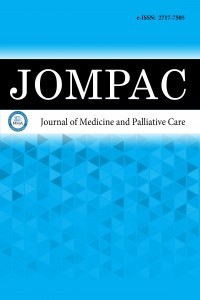1.
Katznelson L, Atkinson J, Cook D, Ezzat S, Hamrahian A, MillerK. AACE Guidelines. Endocr Pract. 2011;17(4):1-44.
2.
Kravets I. Hyperthyroidism: diagnosis and treatment. Am FamPhysician. 2016;93(5):363-370.
3.
Bahn RS, Burch HB, Cooper DS, et al. Hyperthyroidism andother causes of thyrotoxicosis: management guidelines of theAmerican Thyroid Association and American Association ofClinical Endocrinologists. Thyroid. 2011;21(6):593-646.
4.
Sari O, Tanoglu A, Aydogan U, et al. Serum visfatin levels beforeand after levothyroxin treatment in cases with hypothyroidismand subclinical hypothyroidism and their relationships betweenthe lipid levels. Biomed Res. 2012;23(1):55-59.
5.
Cho Y Il, Cho DJ. Hemorheology and microvascular disorders.Korean Circ J. 2011;41(6):287-295.
6.
Popel AS, Johnson PC. Microcirculation and hemorheology. Platelets.2005;37:43-69. doi.org/10.1146/annurev.fluid.37.042604.133933
7.
Kawa MP, Grymula K, Paczkowska E, et al. Clinical relevance ofthyroid dysfunction in human haematopoiesis: biochemical andmolecular studies. Eur J Endocrinol. 2010;162(2):295-305.
8.
Baskurt OK, Meiselman HJ. Blood rheology and hemodynamics.Semin Thromb Hemost. 2003;29(5):435-450.
9.
Somer T, Meiselman HJ. Disorders of blood viscosity. Ann Med.1993;25(1):31-39.
10.
Renoux C, Faivre M, Bessaa A, et al. Impact of surface-area-to-volume ratio, internal viscosity and membrane viscoelasticity onred blood cell deformability measured in isotonic condition. SciRep. 2019;9(1):1-7.
11.
Chasis JA, Mohandas N. Erythrocyte membrane deformabilityand stability: two distinct membrane properties that areindependently regulated by skeletal protein associations. J CellBiol. 1986;103(2):343-350.
12.
Kim J, Lee H, Shin S. Advances in the measurement of red bloodcell deformability: a brief review. J Cell Biotechnol. 2015;1(1):63-79.
13.
Tomaiuolo G. Biomechanical properties of red blood cells inhealth and disease towards microfluidics. Biomicrofluidics.2014;8(5):1-19. doi.org/10.1063/1.4895755
14.
Baskurt OK, Meiselman HJ. Erythrocyte aggregation: basicaspects and clinical importance. Clin Hemorheol Microcirc.2013;53(1-2):23-37.
15.
Connes P, Dufour S, Pichon A, Favret F. Blood Rheology, BloodFlow, and Human Health. In: Bagchi D, Nair S, Sen CK, eds.Nutrition and Enhanced Sports Performance: Muscle Building,Endurance, and Strength. 2nd Edition. Elsevier Inc.: 2018: 359-369. doi.org/10.1016/B978-0-12-813922-6.00030-8
16.
Baskurt OK, Meiselman HJ. Red blood cell “aggregability.” ClinHemorheol Microcirc. 2009;43(4):353-354.
17.
Neu B, Meiselman HJ. Depletion-mediated red blood cellaggregation in polymer solutions. Biophys J. 2002;83(5):2482-2490.
18.
Flormann DAD. Physical charaterization of red blood cellaggregation (Doctoral dissertation, Universität des Saarlandes).2017.
19.
Baskurt OK, Boynard M, Cokelet GC, et al. New guidelinesfor hemorheological laboratory techniques. Clin HemorheolMicrocirc. 2009;42(2):75-97.
20.
Panagoulis C, Halapas A, Chariatis E, Driva P, Matsakas E.Hyperthyroidism and the heart. Hell J Cardiol. 2008;49(3):169-175.
21.
Mejia Osuna P, Udovcic M, Sharma MD. Hyperthyroidism andthe heart. Methodist Debakey Cardiovasc J. 2017;13(2):60-63.
22.
Elblbesy MA, Shawki MM. Dependency of whole blood viscosityand plasma viscosity on electrolytes and lipids-an in vitro study.Int J Basic Appl Sci IJBAS-IJENS. 2016;16(03):168003-9494.
23.
Dörr M, Robinson DM, Wallaschofski H, et al. Brief report: lowserum thyrotropin is associated with high plasma fibrinogen. JClin Endocrinol Metab. 2006;91(2):530-534.
24.
Shih CH, Chen SL, Yen CC, et al. Thyroid hormone receptor-dependent transcriptional regulation of fibrinogen andcoagulation proteins. Endocrinol. 2004;145(6):2804-2814.
25.
Erol-Yilmaz A, Atasever B, Mathura K, et al. Cardiacresynchronization improves microcirculation. J Card Fail.2007;13(2):95-99.
26.
Elbers PWG, Prins WB, Plokker HWM, Van Dongen EPA, VanIterson M, Ince C. Electrical cardioversion for atrial fibrillationimproves microvascular flow independent of blood pressurechanges. J Cardiothorac Vasc Anesth. 2012;26(5):799-803. doi.org/10.1053/j.jvca.2012.04.016
27.
Vayá A, Giménez C, Sarnago A, et al. Subclinical hypothyroidismand cardiovascular risk. Clin Hemorheol Microcirc. 2014;58(1):1-7.
28.
Dintenfass L, Forbes CD, McDougall IR. Blood viscosity inhyperthyroid and hypothyroid patients. Pathophysiol HaemostThromb. 1974;3(5-6):348-352.
29.
Franchini M. Hemostasis and thyroid diseases revisited. JEndocrinol Invest. 2004;27(9):886-892.
30.
Akin MA, Aydogan S, Gunes T, Artis AS, Karakukcu M,Kurtoglu S. Changes of red blood cell rheology in newborns withcongenital hypothyroidism during treatment. J Matern NeonatalMed. 2013;26(15):1532-1536.

